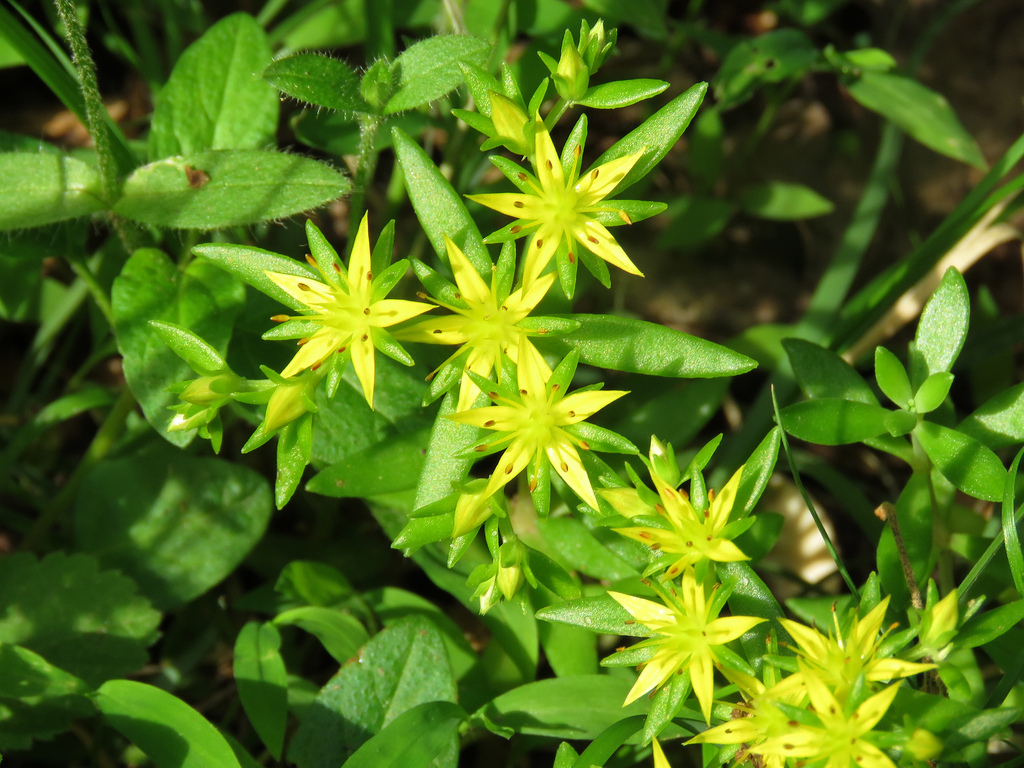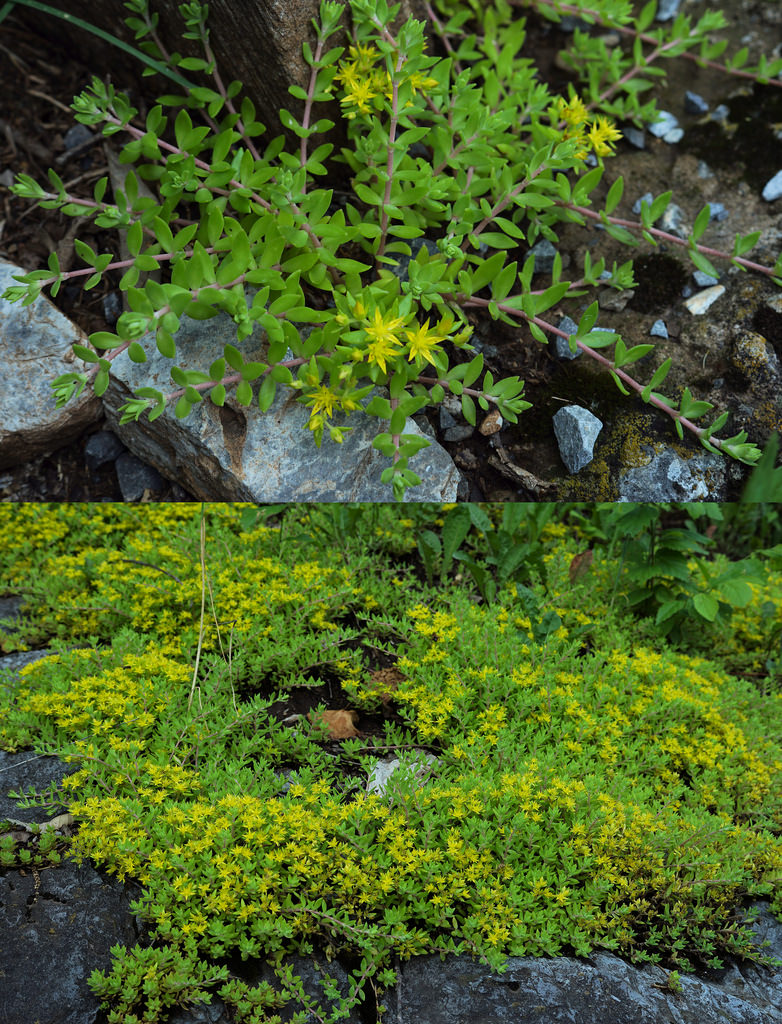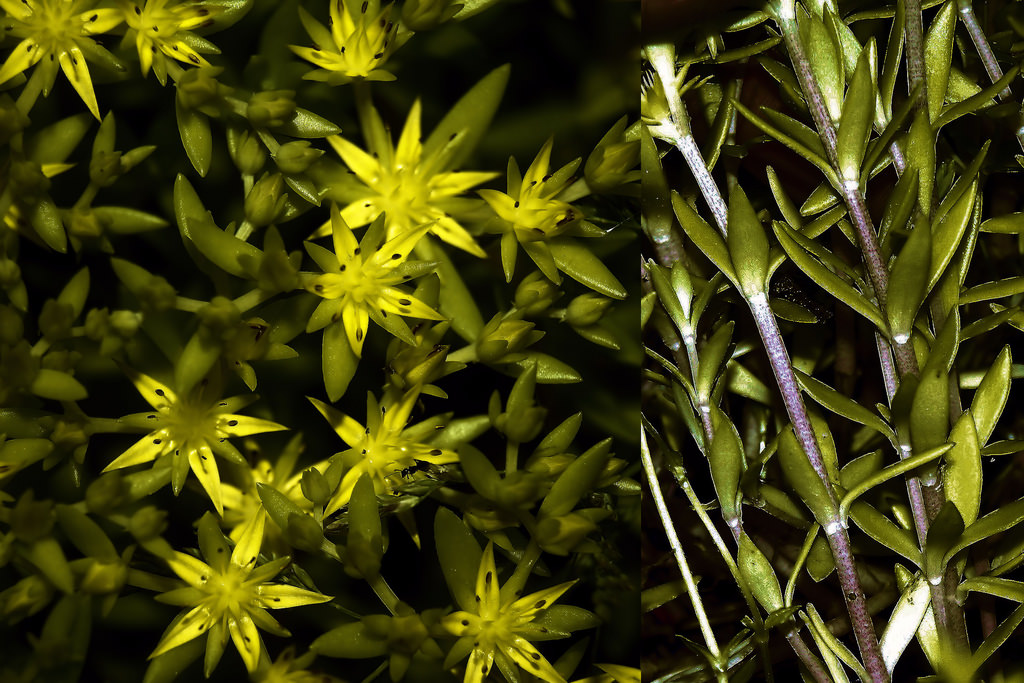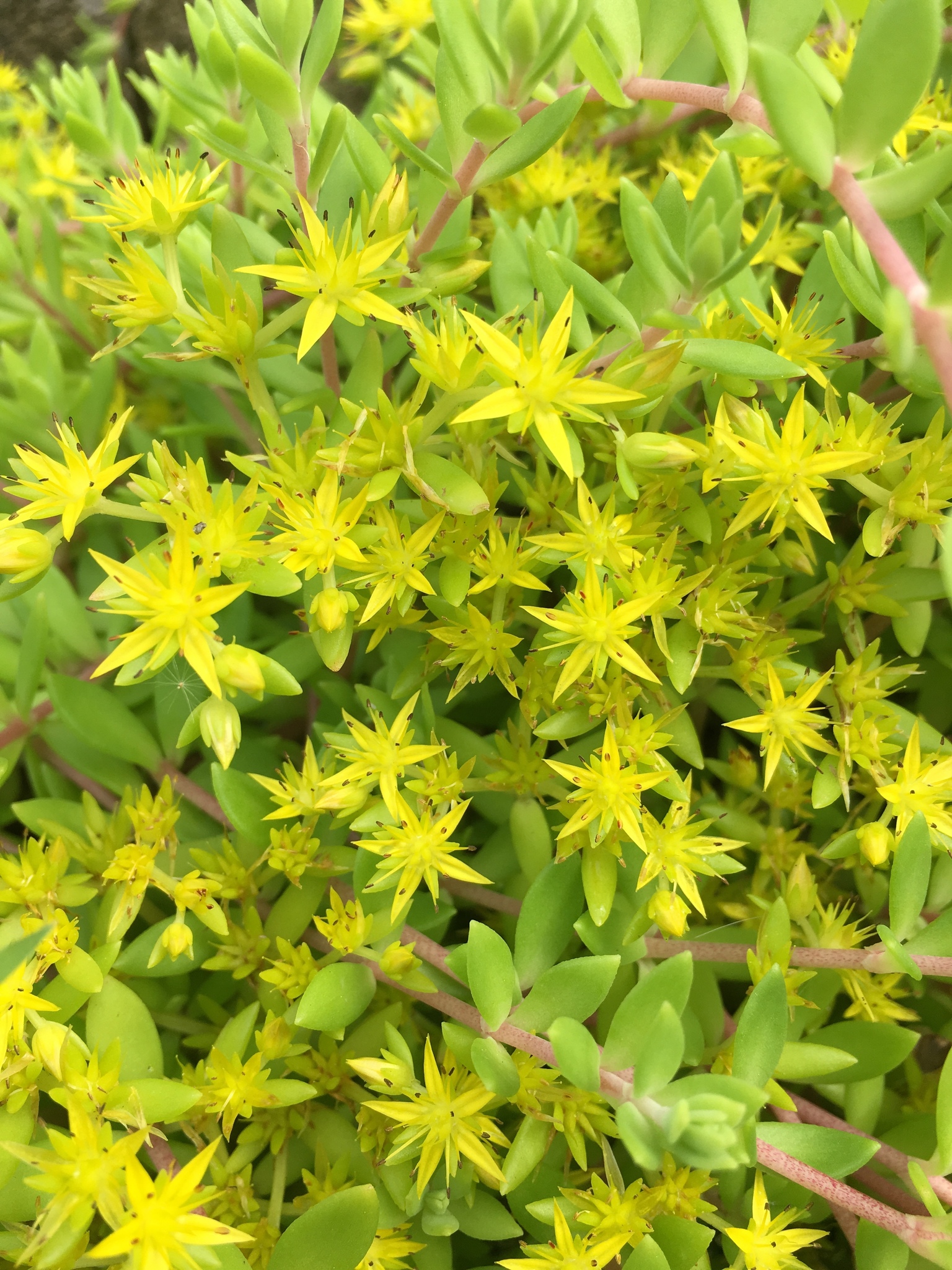Map Snapshot












41 Records
Seasonality Snapshot
Source: Wikipedia
| Sedum sarmentosum | |
|---|---|

| |
| Scientific classification | |
| Kingdom: | Plantae |
| Clade: | Tracheophytes |
| Clade: | Angiosperms |
| Clade: | Eudicots |
| Order: | Saxifragales |
| Family: | Crassulaceae |
| Genus: | Sedum |
| Species: | S. sarmentosum
|
| Binomial name | |
| Sedum sarmentosum | |
| Synonyms | |
|
Sedum angustifolium Z.B.Hu & X.L.Huang | |
Sedum sarmentosum, known as stringy stonecrop,[1] gold moss stonecrop, and graveyard moss,[2] is a perennial flowering plant in the family Crassulaceae native to East Asia (China and Korea) and Southeast Asia (Thailand).[3] It has been introduced in at least eastern North America, and Europe.
Description
[edit]Sedum sarmentosum has succulent, evergreen leaves atop arching, low-lying stems. Yellow flowers with five petals arise on inflorescences during the summer.
Cultivation
[edit]Sedum sarmentosum is cultivated as a perennial groundcover in temperate climates. Like most succulents, it is tolerant of drought and full sun conditions. It was commonly planted at graves, where it may persist for decades. In China, it is often cultivated as a trailing plant, hence the name chuípéncǎo (垂盆草) which means "herb that trails down the flowerpot".
Culinary use
[edit]In Korea, the plant is called dolnamul (돌나물) and is eaten fresh as a namul vegetable. The spicy, sweet, and tangy sauce typically served with dolnamul can be made by mixing gochujang, vinegar (or lemon juice), sugar (or plum syrup), minced garlic, sesame oil, and toasted sesame seeds. Dolnamul is also a common ingredient in bibimbap, as well as Korean-style western food such as dolnamul and roasted fruit salad with yuja dressing.[4]
More recently some sources warn that yellow flowering sedums are a least mildly toxic to humans and possibly dangerous to children and pets. They recommend cooking this variety before eating.[5][6]
-
Dolnamul and peanut salad
References
[edit]- ^ English Names for Korean Native Plants (PDF). Pocheon: Korea National Arboretum. 2015. p. 633. ISBN 978-89-97450-98-5. Archived from the original (PDF) on 25 May 2017. Retrieved 6 January 2017 – via Korea Forest Service.
- ^ USDA, NRCS (n.d.). "Sedum sarmentosum". The PLANTS Database (plants.usda.gov). Greensboro, North Carolina: National Plant Data Team. Retrieved 9 April 2016.
- ^ "Taxon: Sedum sarmentosum Bunge". GRIN. National Plant Germplasm System. 10 February 2006. Retrieved 6 January 2017.
- ^ 강부연 (25 February 2011). "눈과 입이 즐거워지는 spring salad" [spring salads that make your eyes and palate happy]. Woman Chosun (in Korean). Archived from the original on 28 September 2018. Retrieved 6 January 2017.
- ^ updated, Becca Badgett last (2019-09-11). "Can You Eat Succulents: Information About Edible Succulents You Can Grow". gardeningknowhow. Retrieved 2024-06-09.
- ^ Inc, Gregarious. "Stringy Stonecrop Is Not Toxic to Humans". Greg App 🪴. Retrieved 2024-06-09.
{{cite web}}:|last=has generic name (help)
External links
[edit] Media related to Sedum sarmentosum at Wikimedia Commons
Media related to Sedum sarmentosum at Wikimedia Commons- "Sedum sarmentosum". Plants for a Future.








